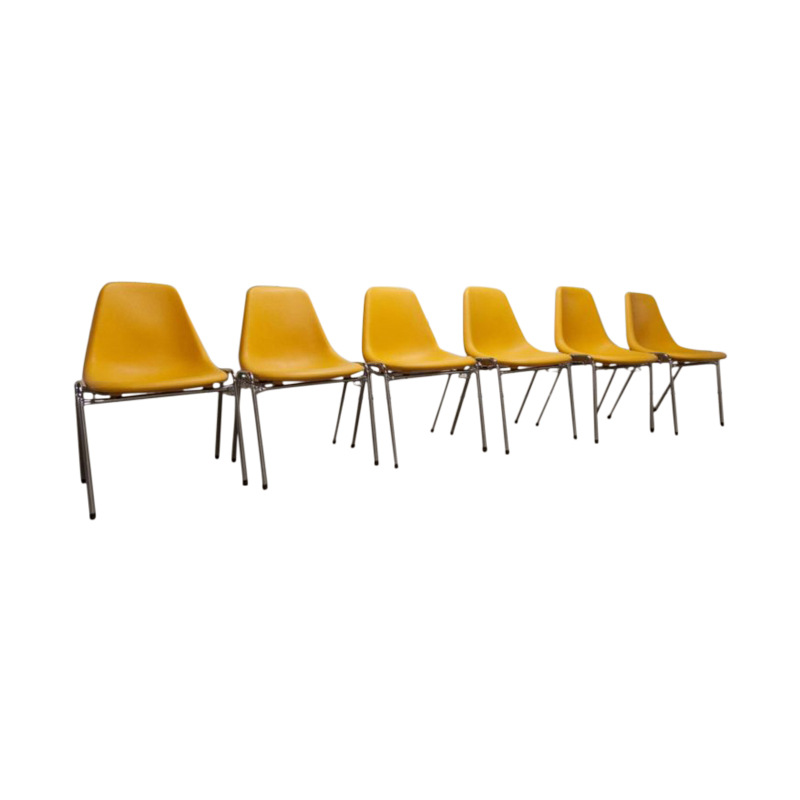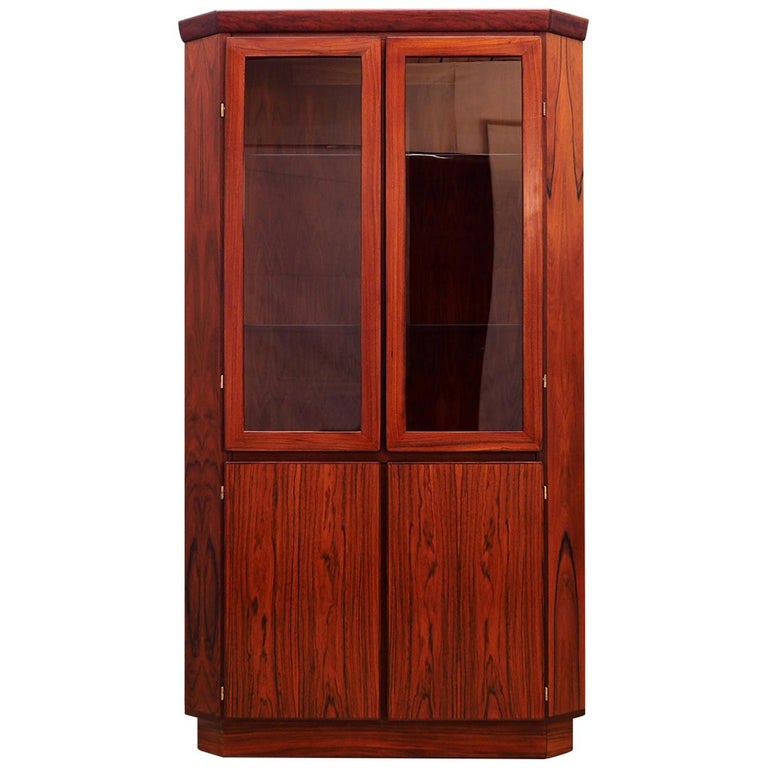Does anyone know if the chair appearing on top in this ad (taken from Canadian Interior, May 1967) has really been designed by Le Corbusier...I'm really unsure about that fact, even if the ad uses his name in big letters... The model of the chair is 1811c. Does anyone ever saw this in any of Le Corbusier production?

Intersting...
I've never...
Intersting...
I've never seen the Corbusier attribution before. I have seen it attributed to Josef Hoffman as well as Josef Frank.
http://www.worthpoint.com/worthopedia/vintage-thonet-bent-wood-armchair-...
http://www.architonic.com/de/pmviw/no-811-armlehnstuhl-ton/1120199
-Note the additional support attached to the legs on the chair in the second link. Apart from this detail the chairs are identical.
To add to the confusion I recently discovered a watercolor sketch of the same chair in Janne Ahlin's monograph on Swedish architect Sigurd Lewerentz. It doesn't say he designed it, but I believe every other piece among the watercolor illustrations in this book were by Lewerenz.
I have one of those chairs myself (without the extra wooden support) and my chair was manufactured at SMF Bodafors in Sweden.
Thonet Ligna Bentwood Le Corbusier Frank Hoffman
Really interesting indeed... by looking carefully at the first link you provided, I noticed that there is a tiny difference: the legs are not as round as the ones on the ad, those in your link seems to have more details on the bottom side.... also check this, compare the legs :
http://www.worthpoint.com/worthopedia/set-six-ligna-czechoslovakia-bentwood
Thank you for your findings... I'll definitely check monday in the book mentioned in the first link. I know that Thonet has a Le Corbusier arm chair, but it doesen't look like that at all..
My parents have a lot of 6 of them but they were made in Chekoslovakia... I guess they were really popular here in quebec at the end of the 60's...
You're right, I didn't...
You're right, I didn't notice the squared front legs on those.
Mine has the rounded slightly outward pointed legs, like the Corbusier-attributed chair and the Ligna chairs. The watercolor in the Lewerentz book has straight front legs (can't tell if they're supposed to be rounded or not, since it's a watercolor, but judging from the overall look, I would say rounded.) and also, it is blue with a red seat.
Thonet should have some kind of archive of who designed what and what was licensed to other manufacturers such as SMF Bodafors and Ligna. Have you tried contacting them?
Corbu was
known to be fond of a particular Thonet bentwood chair -- as I recall it. It wouldn't have surprised me to learn that he had designed for that company. This Canadian chair is news to me.
This photo is labeled "Jeanneret House in Paris, 1923. Interior." The armchair is similar to ones I've seen in other Corbusier photos.
Corbu may have
felt about the Thonet chairs that they represented rational, comfortable, and technically advanced seating in the 'twenties, just as some of Wright's clients and contemporaries, just after the war, might have thought of the Eames wood and fiberglass chairs. Here are two c.1940 Wright Usonians, with DCWs purchased by their original clients when the chairs became available a few years later. Wright, who preferred to design his own furniture, couldn't have been ignorant of the Eames product -- he even chose the photo below of the Pew kitchen and dining area to illustrate his own "The Natural House," in 1954. The other house is the Rosenbaum Usonian, in Alabama.
Wright was hopeless when it came to trying his hand at the same "style" (photo 3, chair for the David Wright house, 1950)
Corbu Bentwood
Chair No. 9
Bent, solid and laminated beech, woven cane
Production: Thonet, Austria
Desk Chair No. 9, c.1905
Production: Thonet, Austria
Developed by Thonet as a comfortable, inexpensive desk chair, the No. 9 ? or Vienna Chair ? went on sale in 1902. It attained iconic status when the architect Le Corbusier chose it to furnish his Pavilion de l?Esprit Nouveau (the Pavilion of the New Spirit) at the 1925 Exposition Internationale des Arts Décoratifs in Paris. Le Corbusier justified his choice by explaining: ?We believe that this chair, millions of which are in use? is a noble thing.? Architects flocked to Paris for the 1925 Exposition from all over the world and Le Corbusier?s pavilion was one of the most admired installations.
This is from the design museum (London) website. A quick online search showed no other connection between Thonet and Le Corbusier. I am very curious to hear what Thonet says on the subject.
Here's all..
Here's all that's been gathered so far (Images in order)
1. The Frank and Hoffmann attribution, directly taken from the book: Bent wood and metal furniture, 1850-1946 / edited by Derek E. Ostergard ; text by Alessandro Alverà ... [et al.]
2. A new ad from a 1972 issue (june or july I forgot sorry...) of Canadian interior. Note that the distributors is not the same and the model no. is clearly stated. So Ligna would have been the manufacturer.
3. An out of nowhere photo, also from Canadian Interior, may 1972, for an article about canadian universities libraries. The photo does not, unfortunately, have any description
I think Josef Frank...
Very interesting thread...
I was looking for chairs like these and just bought 4 of these last weekend ($10 each at a garage sale in Montreal, would you believe it??). Unfortunately they're white, so I'll try to remove the paint and stain them. Looking underneath the seat, I found they were made by Ligna in "Czekoslovakia" in 1961.
They are still made today, by (I figure) the same company that changed name: http://www.ton.cz/en/armchairs-4/detail1/armchair-no-811-325811-.html
It is attributed to Josef Frank in their catalog.
I was particularly excited by the old Canadian Interior ads since I was searching the history of plywood chairs I own, a wonderful design that I can't find info anywhere.
Just a general
comment: The default finish for wood, in the minds of many, seems to be "stain." I have found that some refer to any finish as "stained" -- so one can't be sure what is intended. A clear finish is the correct default, in my view; as soon as stain (colorant) is introduced, every peculiarity and defect of the surface of the wood is emphasized, while variations in color are minimized -- the primary purpose of stain in the commercial realm.
Old furniture -- furniture which has seen use and wear, and may have coats of finish which need to be removed -- are not appropriate candidates for stains, it seems to me, as everything which has been done to the wood over time will interfere with a uniform acceptance of the color. A clear finish is therefore the most appropriate choice in this instance -- it seems to me.
Canadian Interiors
I managed to look at every Canadian Interiors magazine from the 70's and these chairs, by 1975-1976 or so, appears everywhere! Not only in ads, but in many, many photos of offices and public buildings interior. I think that they were distributed here in Canada by the Bentwood chair company in Montreal and then, by the Aarkchair company. Either way, they were always made in czechoslovakia by Ligna. (By the way, I never had any answers from the Thonet Museum Department...) and I don't think that Le Corbusier has been involved in their creation at all: the ad says "the chair he designed for Bentwood". I may be wrong but I think it's a false statement since Ligna was the manufacturer...
Canadian Interiors - bis
Spent some time over the weekend reading about Le Corbusier's use of Thonet chairs. I read that he felt them worthy of appearing in his creations; I found several photos of his interiors displaying this model and the more traditional, original model 14 (by Thonet himself).
Regarding Montreal's connections, I believe that Aarkash was an importer of the Ligna line while Bentwood Chairs Company was a manufacturer and made copies. I notice that the arm section of the Bentwood chair is attached to the seat at a slight angle, while the Ligna assembly is perfectly straight. Incidentally, Bentwood Chairs Company still exists, but it has changed name and is now Dor-Val Mfg (they kept the same logo...) but dropped these copies.
If you need any help, please contact us at – info@designaddict.com









